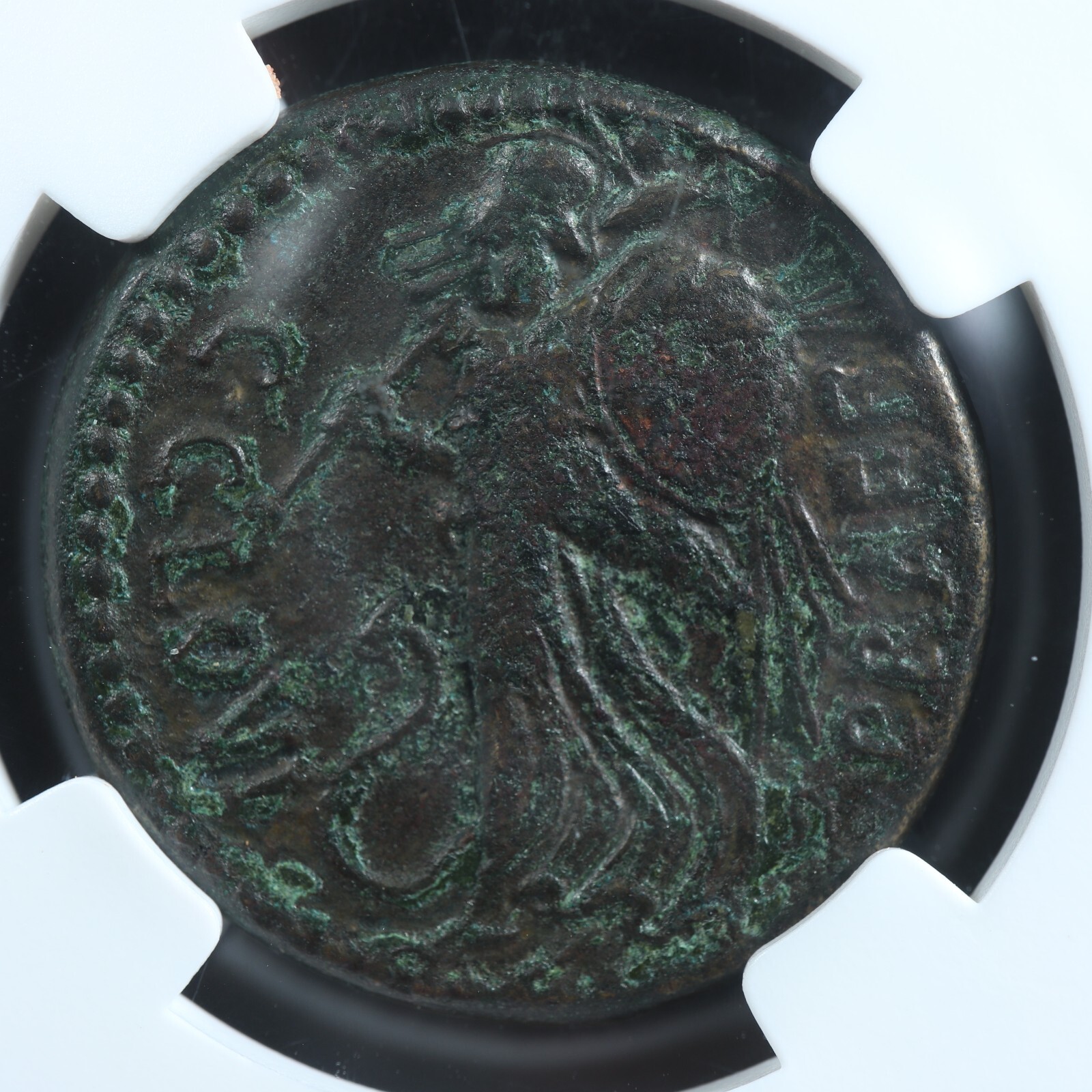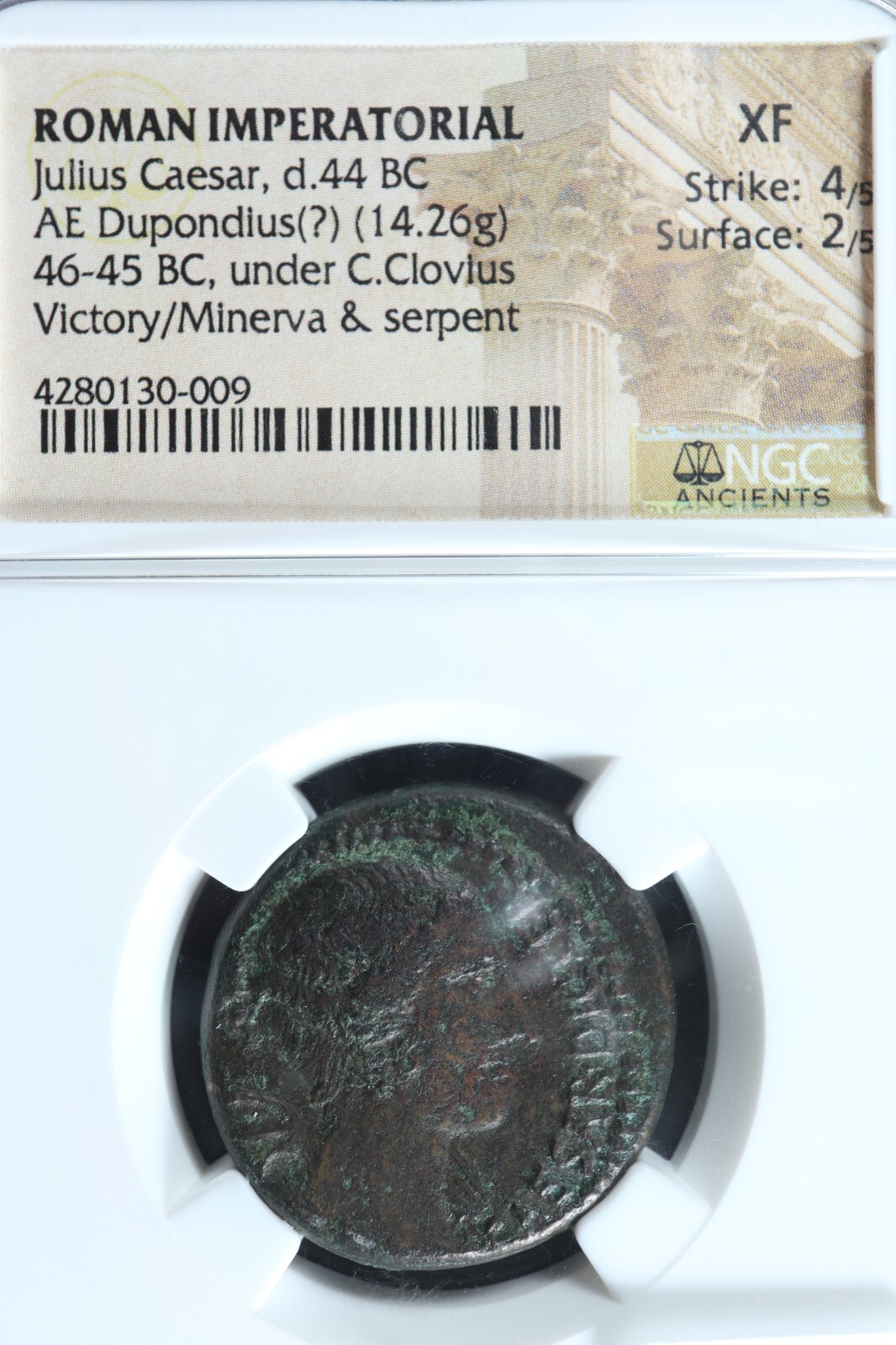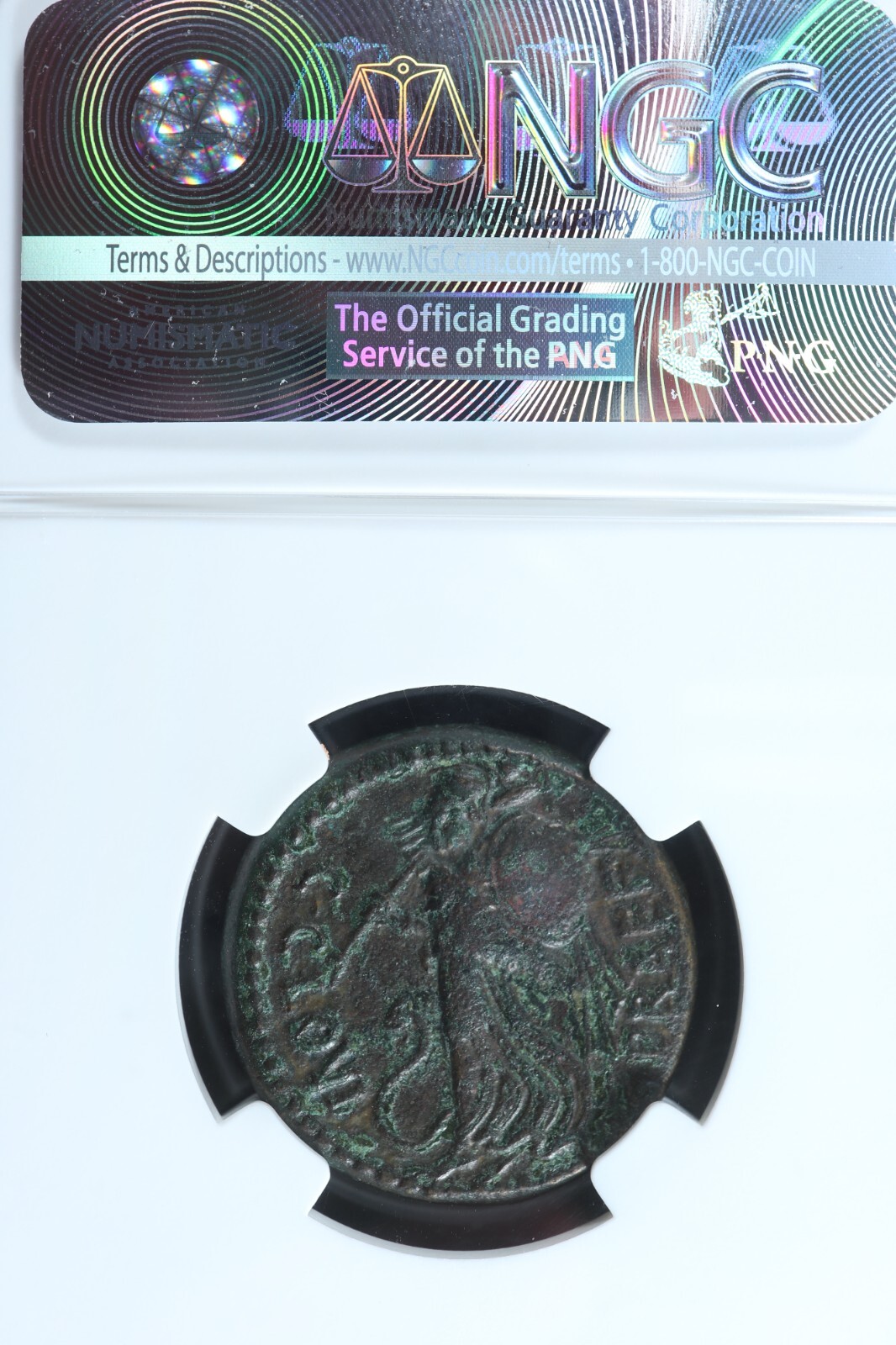Sold Out!
Julius Caesar Dupondius Late 46/early 45 BC Rome RPC 601 NGC XF Victory Minerva
Julius Caesar as Dictator (The Caesarians), Dupondius, Late 46/early 45 BC, Rome, C. Clovius as prefect
Sold "$1,200.00" on "21-07-2025"
SoldRPC I 601; Crawford 476/1a; CRI 62; Sydenham 1025; RBW 1667; RCVM 1417.
Obv.: CAESAR DIC TER, Winged and draped bust of Victory right.
Rev.: C CLOV PRAEF, Minerva advancing left, holding trophy over shoulder and spears and shield; at feet to left, snake gliding left with head erect.
14.26 g
NGC graded XF, Strike: 4/5, Surface: 2/5 (Certification #4280130-009).
This issue would seem to be closely associated with the gold aurei and quinarii of L. Plancus and there appears to be no compelling reason to regard it as anything other than a complementary coinage produced in Rome for distribution at Caesar's Spanish triumph. The issue of aes at this time was a great novelty as regular production had ceased four decades before and was not destined to be resumed until the Augustan reform of c.19-18 sc. The idea probably originated with the Pompeian coinage of asses issued in Spain prior to the battle of Munda. These, however, were of the traditional type for this denomination (Janus head/prow) and conformed to the old uncial weight standard of about 22 grams. Caesar's coinage, however, was of totally novel design and was struck in orichalcum (brass), the first time this metal had been used for currency in the West. This makes the denomination difficult to determine, but an approximate weight standard of 15 grams would seem to indicate a dupondius. The bust of Victory and the warlike figure of Minerva convey a clear message that this was a special coinage issued for the celebration of a military success. Not a great deal is known of C. Clovius (or Cluvius), the prefect entrusted with the production of this most unusual coinage. We are not even sure of the precise nature of his prefectship, though it is tempting to assume that he was another of the six praefecti Urbi appointed by Caesar before he set out for Spain. In 44 BC we find him as governor of Cisalpine Gaul and there appear to be later references to him in the age of Augustus.
Taken from The History and Coinage of the Roman Imperators 49-27 BC (CRI) by David R Sear
______________________________




